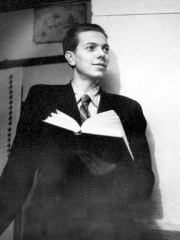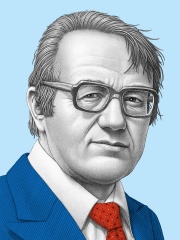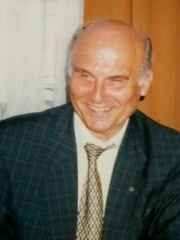
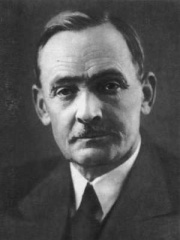
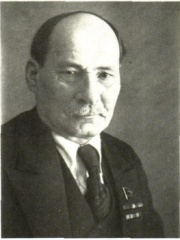
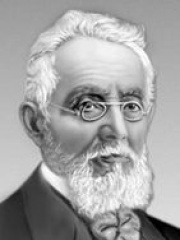
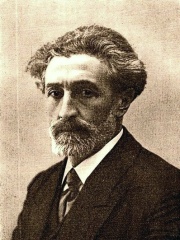
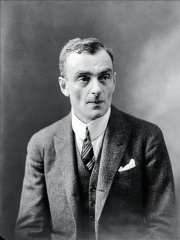
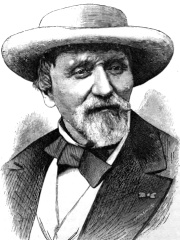

The Most Famous
WRITERS from Belarus
Top 10
The following people are considered by Pantheon to be the top 10 most legendary Belarusian Writers of all time. This list of famous Belarusian Writers is sorted by HPI (Historical Popularity Index), a metric that aggregates information on a biography's online popularity. Visit the rankings page to view the entire list of Belarusian Writers.

1. Ryszard Kapuściński (1932 - 2007)
With an HPI of 69.57, Ryszard Kapuściński is the most famous Belarusian Writer. His biography has been translated into 47 different languages on wikipedia.
Ryszard Kapuściński (Polish: [ˈrɨʂart kapuˈɕt͡ɕij̃skʲi] ; 4 March 1932 – 23 January 2007) was a Polish journalist, photographer, poet and author. He received many prestigious awards and was considered a candidate for the Nobel Prize in Literature. Kapuściński's personal journals in book form attracted both controversy and admiration for blurring the conventions of reportage with the allegory and magical realism of literature. He was the Communist-era Polish Press Agency's only correspondent in Africa during decolonization, and also worked in South America and Asia. Between 1956 and 1981 he reported on 27 revolutions and coups, until he was fired because of his support for the pro-democracy Solidarity movement in his native country. He was celebrated by other practitioners of the genre. The acclaimed Italian reportage-writer Tiziano Terzani, Colombian writer Gabriel García Márquez, and Chilean writer Luis Sepúlveda accorded him the title "Maestro". Notable works include Jeszcze dzień życia (1976; Another Day of Life), about Angola; Cesarz (1978; The Emperor, 1983), about the downfall of Ethiopian ruler Haile Selassie, also considered to be a satire of Communist Poland; Wojna futbolowa (1978; The Soccer War, 1991), an account of the 1969 conflict between Honduras and El Salvador, and other stories from the life of the reporter in Africa and Latin America; Szachinszach (1982; Shah of Shahs, 2006) about the downfall of the last Shah of Iran; Imperium (1993), an account of his travels through the collapsing Soviet Union; Heban (1998), later published in English as The Shadow of the Sun (2001), the story of his years in Africa; and Podróże z Herodotem (2004; Travels with Herodotus), in which he ponders over relevance of The Histories by Herodotus to a modern reporter's job.

2. Yanka Kupala (1882 - 1942)
With an HPI of 69.02, Yanka Kupala is the 2nd most famous Belarusian Writer. His biography has been translated into 84 different languages.
Ivan Daminikavich Lutsevich (Belarusian: Іван Дамінікавіч Луцэвіч, Polish: Iwan Daminikawicz Łucewicz; July 7 [O.S. June 25] 1882 – 28 June 1942), better known by his pen name Yanka Kupala (Янка Купала), was a Belarusian poet and writer.

3. Yakub Kolas (1882 - 1956)
With an HPI of 67.62, Yakub Kolas is the 3rd most famous Belarusian Writer. His biography has been translated into 70 different languages.
Yakub Kolas (also Jakub Kołas, Belarusian: Яку́б Ко́лас, 3 November [O.S. 22 October] 1882 – 13 August 1956), real name Kanstantsin Mikhailovich Mitskievich (Канстанці́н Міха́йлавіч Міцке́віч, Russian: Константи́н Миха́йлович Мицке́вич, Polish: Konstanty Mickiewicz) was a Belarusian writer, dramatist, poet and translator. People's Poet of the Byelorussian SSR (1926), member (1928) and vice-president (from 1929) of the Belarusian Academy of Sciences. In his works, Yakub Kolas was known for his sympathy towards the ordinary Belarusian peasantry. This was evident in his pen name 'Kolas', meaning 'ear of grain' in Belarusian. He wrote collections of poems Songs of Captivity (Russian: Песни неволи, 1908) and Songs of Grief (Belarusian: Песьні-жальбы, 1910), poems A New Land (Belarusian: Новая зямля, 1923) and Simon the Musician (Belarusian: Сымон-музыка, 1925), stories, and plays. His poem The Fisherman's Hut (Belarusian: Рыбакова хата, 1947) is about the fight after unification of Belarus with the Soviet state. His trilogy At a Crossroads (Russian: На перепутье, 1925) is about the pre-Revolutionary life of the Belarusian peasantry and the democratic intelligentsia. He was awarded the Stalin Prize in 1946 and 1949.

4. Mendele Mocher Sforim (1835 - 1917)
With an HPI of 65.62, Mendele Mocher Sforim is the 4th most famous Belarusian Writer. His biography has been translated into 28 different languages.
Mendele Mocher Sforim (official name: Sholem Yankev Abramovich; January 2, 1836 – December 8 [O.S. 27 November] 1917) was a Belarusian Jewish author and one of the founders of modern Yiddish and Hebrew literature.
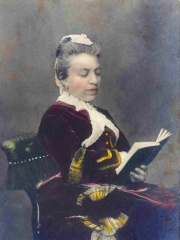
5. Eliza Orzeszkowa (1841 - 1910)
With an HPI of 64.76, Eliza Orzeszkowa is the 5th most famous Belarusian Writer. Her biography has been translated into 36 different languages.
Eliza Orzeszkowa (6 June 1841 – 18 May 1910) was a Polish novelist and a leading writer of the Positivism movement during the foreign Partitions of Poland. In 1905, together with Henryk Sienkiewicz, she was nominated for the Nobel Prize in Literature.

6. S. Ansky (1863 - 1920)
With an HPI of 64.66, S. Ansky is the 6th most famous Belarusian Writer. His biography has been translated into 22 different languages.
Shloyme Zanvl Rappoport (Russian: Шлиом Аро́нович Рапопо́рт; October 27, 1863 – November 8, 1920), also known by his pen name S. An-sky, was a Jewish author, playwright, researcher of Jewish folklore, polemicist, and cultural and political activist. He is best known for his play The Dybbuk or Between Two Worlds, written in 1914, and for Di Shvue, the anthem of the Jewish socialist Bund. In 1912-1914, he led the Jewish Ethnographic Expedition to the Pale of Settlement. In 1917, after the Russian Revolution, he was elected to the Russian Constituent Assembly as a Social-Revolutionary deputy.

7. Oscar Milosz (1877 - 1939)
With an HPI of 62.98, Oscar Milosz is the 7th most famous Belarusian Writer. Her biography has been translated into 19 different languages.
Oscar Vladislas de Lubicz Milosz (Lithuanian: Oskaras Milašius; Polish: Oskar Władysław Miłosz) (28 May 1877 or 15 May 1877 – 2 March 1939) was a French language poet, playwright, novelist, essayist and representative of Lithuania at the League of Nations. His literary career began at the end of the nineteenth century during la Belle Époque and reached its high point in the mid-1920s with the books Ars Magna and Les Arcanes, in which he developed a highly personal and dense Christian cosmogony comparable to that of Dante in The Divine Comedy and John Milton in Paradise Lost. A solitary and unique twentieth-century metaphysician, his poems are visionary and often tormented. He was a distant cousin of Polish writer Czesław Miłosz, winner of the Nobel Prize for literature in 1980.

8. Aleksander Chodźko (1804 - 1891)
With an HPI of 62.71, Aleksander Chodźko is the 8th most famous Belarusian Writer. His biography has been translated into 22 different languages.
Aleksander Borejko Chodźko (30 August 1804 – 27 December 1891) was a Polish poet, Slavist, and Iranologist.

9. Bella Rosenfeld (1889 - 1944)
With an HPI of 62.23, Bella Rosenfeld is the 9th most famous Belarusian Writer. Her biography has been translated into 17 different languages.
Bella Rosenfeld Chagall (Russian: Бэлла Розенфельд-Шагал, Yiddish: בעלאַ ראָזענפעלד) (14 December 1889 – 2 September 1944) was a Jewish Russian writer born in Vitebsk, Russian Empire, nowadays Belarus, and the first wife of painter Marc Chagall. She was the subject of many of Chagall's paintings including Bella au col blanc (Bella with White Collar) in 1917, and appears posthumously in Bouquet près de la fenêtre, painted in 1959–1960.

10. Vasil Bykaŭ (1924 - 2003)
With an HPI of 61.79, Vasil Bykaŭ is the 10th most famous Belarusian Writer. His biography has been translated into 38 different languages.
Vasil Uladzimiravič Bykaŭ (also spelled Vasil Bykov, Belarusian: Васі́ль Уладзі́міравіч Бы́каў, Russian: Василь Влади́мирович Быков; 19 June 1924 – 22 June 2003) was a Belarusian dissident and opposition politician, junior lieutenant, and author of novels and novellas about World War II. A significant figure in Soviet and Belarusian literature and civic thought, his work earned him endorsements for the Nobel Prize nomination from, among others, Nobel Prize laureates Joseph Brodsky and Czesław Miłosz.
People
Pantheon has 27 people classified as Belarusian writers born between 1629 and 1984. Of these 27, 1 (3.70%) of them are still alive today. The most famous living Belarusian writers include Evgeny Morozov. The most famous deceased Belarusian writers include Ryszard Kapuściński, Yanka Kupala, and Yakub Kolas.
Living Belarusian Writers
Go to all RankingsDeceased Belarusian Writers
Go to all RankingsRyszard Kapuściński
1932 - 2007
HPI: 69.57
Yanka Kupala
1882 - 1942
HPI: 69.02
Yakub Kolas
1882 - 1956
HPI: 67.62
Mendele Mocher Sforim
1835 - 1917
HPI: 65.62
Eliza Orzeszkowa
1841 - 1910
HPI: 64.76
S. Ansky
1863 - 1920
HPI: 64.66
Oscar Milosz
1877 - 1939
HPI: 62.98
Aleksander Chodźko
1804 - 1891
HPI: 62.71
Bella Rosenfeld
1889 - 1944
HPI: 62.23
Vasil Bykaŭ
1924 - 2003
HPI: 61.79
Uladzimir Karatkievich
1930 - 1984
HPI: 60.74
Ales Adamovich
1927 - 1994
HPI: 60.59
Overlapping Lives
Which Writers were alive at the same time? This visualization shows the lifespans of the 24 most globally memorable Writers since 1700.


